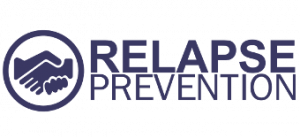Although cravings are time limited, it is important to equip the client with the tools he/she needs to endure their urges to use speed. This is especially true, given that sometimes, cravings cannot be avoided.
Below are listed a number of strategies that seem helpful in managing cravings and urges to use. These correspond to the behavioural, physical and cognitive (thought) aspects of cravings described above.
You will need to identify with the client the strategies he/she has used and found helpful in the past and add in some of the strategies listed below. Discuss these strategies with the client and identify those that they think they might find useful in managing their experiences of cravings. If time allows, practice each of these techniques during the session. In addition, provide the client with written reminders of each of these techniques as appropriate.
(a) Behavioral
(b) Cognitive
(c) Relaxation and imagery
(a) Behavioral
Discuss the “3Ds” of coping with cravings:
Delay – encourage the client to avoid situational triggers, particularly during the early phase of modifying their use; however this will not stop cravings from coming altogether. When a craving does hit, delay the decision to use for a minute at a time or longer if the client can manage. During this time, ask the client to say to themselves: “I will not act on this craving right away. I’ll delay my decision to act on this craving for…minutes”. This will help the client to break the habit of immediately reaching for speed when a craving hits. Refer back to assessment (precipitation factors/triggers) to discuss real-life examples with your client.
Distract – once the decision to use is delayed, the client needs to distract themselves from thoughts about using. Generate some ideas for strategies to use as a distraction technique such as going for a brisk walk, calling a support person, listening to music etc. Write these down for the client and ask him/her to keep this list handy and accessible for ease of reference when the craving begins. Explain to the client that once they are interested in, or actively doing, something else, they will find the urges will reduce in intensity until they have gone altogether.
Decide – after the craving has passed, revisit all the reasons why the client wanted to stop using speed in the first place. Decide then and there not to use again and ask the client to congratulate himself or herself on not giving in to something that is, after all, only a thought or a feeling.
Positive talk – by asking the client to remind themselves about the shortterm nature of cravings (e.g. “this feeling will pass”, “I can cope with this”, “I don’t have to act on this because it will go away on its own”), the urges themselves will be easier to deal with. It is important to “decatastrophise” the experience of cravings – acknowledge that they are uncomfortable/ unpleasant but also that they will pass.Top of page
(c) Relaxation and imagery
Relaxation/deep breathing – if cravings develop in response to stressful situations, relaxation techniques and deep breathing exercises can be useful (if a person is relaxed then they cannot be stressed).
The urges that some clients experience can often be in the form of images or even dreams. For example, a particular client (Irene) found that after a period of four months abstinence from speed she started to have images flash into her mind that involved her walking past a house where she knew speed was available. These images had started to increase her cravings to use.
Some strategies Irene found to be helpful in managing/transforming such images are listed below. Talk through each of these strategies with your client and then rehearse and practise in the session.
These strategies can be adapted to suit each individual client’s disturbing images as they arise.
Mastery (imagine not smoking in the given situation).
For example, Irene was asked to conjure up the image of the house in which speed was available. She was then asked to imagine herself walking past the house instead of going in and buying speed. She was then asked to imagine how good she would feel about her achievement.
For example, Irene was asked to conjure up the house image and then to replace it with an alternative image, such as walking along the beach on her last holiday when she was not using speed and was feeling relaxed and happy.
“Fast forward” (unfreeze the image and move it on in time, a few minutes, hours, days etc. to enable the client to see that he/she is looking at only a part of the picture which may in fact be a distortion of the whole picture).
For example, Irene was asked to conjure up the house image and then to unfreeze it and fast forward (almost as if pressing a fast forward button on a video player) and imagine in detail the usual consequences that follow scoring speed from this house. She was asked to describe the immediate, short and long-term consequences in detail. Having done this, Irene found that the negative consequences of scoring and using outweighed the short-term benefits and she was able to apply this realisation to future positive self-talk when cravings emerged.
“Surfing the urge” (the craving is a wave that can be surfed until it passes).
Irene was asked to see her craving to use speed as a wave. She was then asked to imagine herself surfing the wave (craving) in the way in which a surfer would surf a wave, and to see herself successfully riding the wave (and managing her craving) until it finally broke on the beach (reduced in intensity and passed away without being reinforced).
